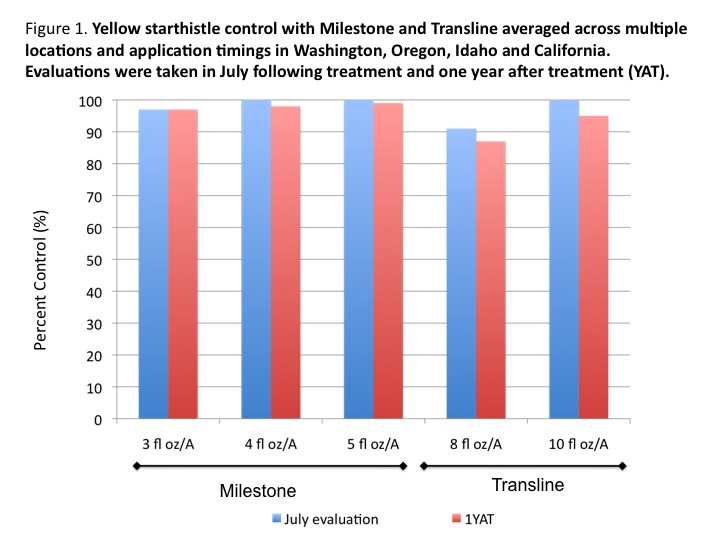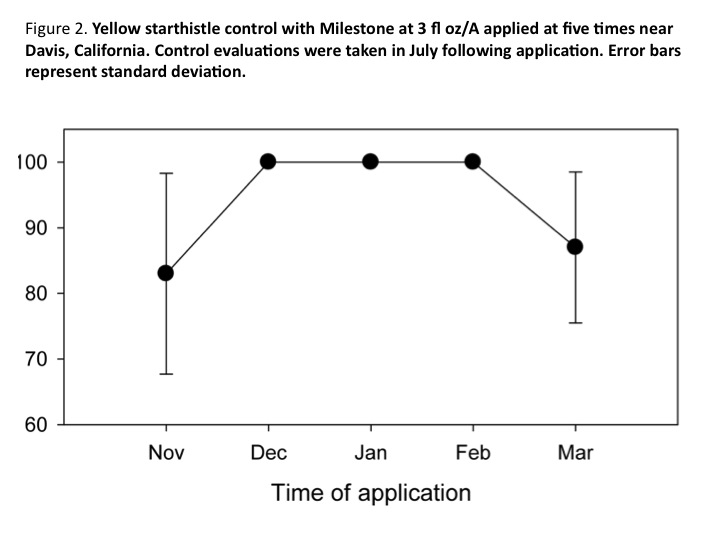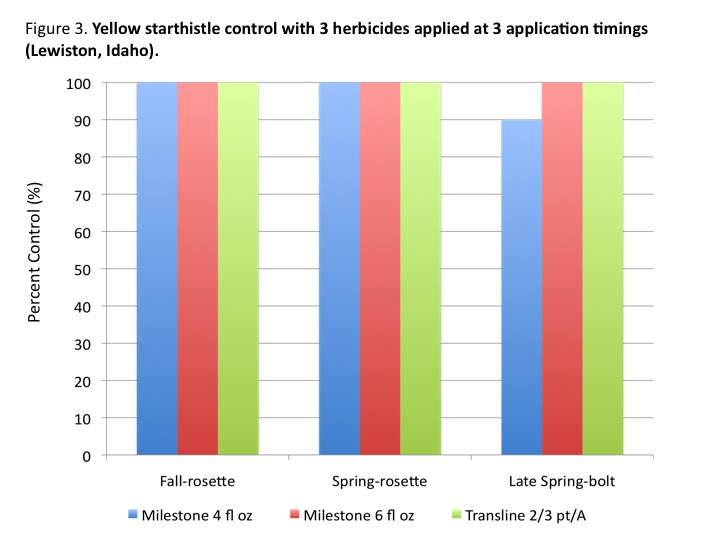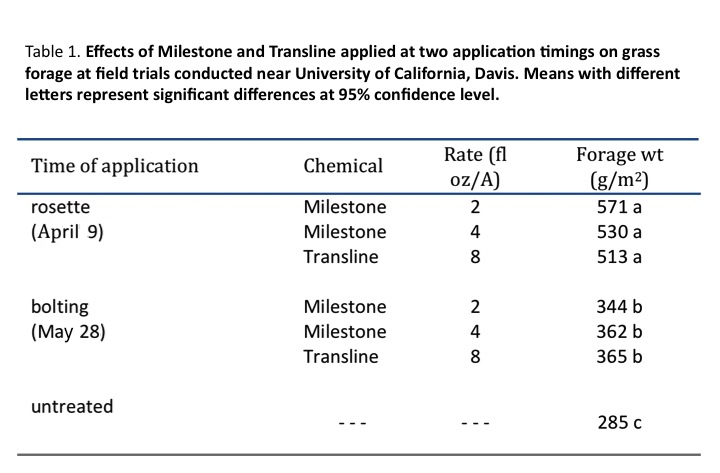About Yellow Starthistle
Yellow starthistle (Centaurea solstitialis) is one of the most widespread invasive broadleaf weeds on rangeland and natural areas in the United States. It is a taprooted, winter annual, or rarely a biennial or short-lived perennial plant, that spreads by seed. Individual plants can produce more than 100,000 seeds, and dense infestations can yield 50 to 100 million seeds per acre. Plants produce one to many solitary, spiny, yellow flower heads beginning in late June and continuing through September and sometimes much later. Yellow starthistle displaces desirable vegetation in part through competition for available soil moisture. The weed is toxic to horses, and its spiny flower heads can reduce livestock carrying capacity.
Treatment Recommendations and Data Summary
Field trials conducted in California, Idaho, Washington and Oregon show that Milestone® and Transline® herbicides provide effective control of yellow starthistle. Milestone at 3 to 5 fl oz/A (fluid ounces per acre) and Transline at 8 to 10 fl oz/A can be applied from early rosette to bolt growth stage when soil moisture is present and plants are actively growing (Figure 1). The higher application rate should be applied at the bolt growth stage.

Results of field trials conducted by the University of California-Davis indicate that the ideal time to apply Milestone to control yellow starthistle in the Central Valley of California is within a three-month period from December through February (Figure 2).

Additional studies conducted near Lewiston, Idaho (Figure 3) showed that Milestone at 4 to 6 fl oz/A applied to yellow starthistle at fall rosette (November), spring rosette (April), and late spring bolting (May) growth stage effectively controlled yellow starthistle. Although the bolt growth stage treatment stopped seed production when evaluated at the end of the growing season in Idaho, there is a greater risk of viable seed production at this and later application timings.

An additional benefit to controlling yellow starthistle at the early rosette growth stage is an increase in annual grass forage production compared to later application timings. Field studies conducted at University of California-Davis show significantly greater annual grass production when yellow starthistle was controlled at the early rosette growth stage (Table 1). These data are supported by similar field studies conducted by University of Idaho.

Summary of Herbicide Treatments for Yellow Starthistle Control
Both Milestone® and Transline® herbicides provide excellent control of yellow starthistle.
References
DiTomaso J, V Carrithers, E Flora, W Belles. 2005. Control of yellow starthistle (Centaurea solstitialis) with aminopyralid. In Proceedings Western Society of Weed Science. P 61.
Wallace J, and T Prather. 2009. Yellow starthistle control with aminopyralid on Idaho rangeland. WSWS Research Progress Report. Pg. 32-33.
Celestine Duncan contributed to this article.
®™ Trademarks of Dow AgroSciences, DuPont, or Pioneer and their affiliated companies or respective owners.
Milestone® herbicide is not registered for sale or use in all states. Contact your state pesticide regulatory agency to determine if a product is registered for sale or use in your state. When treating areas in and around roadside or utility rights-of-way that are or will be grazed, hayed, or planted to forage, important label precautions apply regarding harvesting hay from treated sites, using manure from animals grazing on treated areas, or rotating the treated area to sensitive crops. Consult the label before purchase or use for full details. Always read and follow label directions
State restrictions on the sale and use of Transline apply. Consult the label before purchase or use for full details. Always read and follow label directions. ©2019 Corteva
Published: February, 2011; updated June 2019




